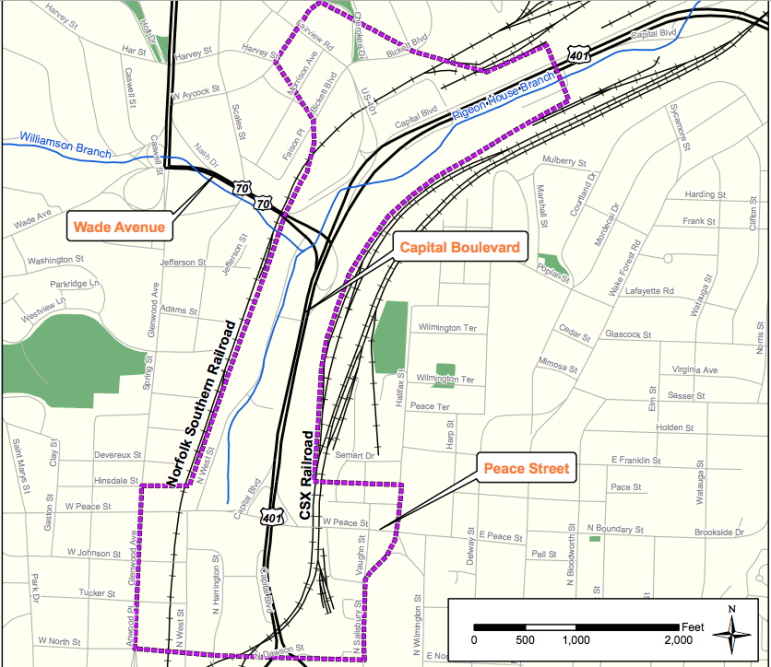The 65-year-old Capital Boulevard bridge over Peace Street is getting closer to reconstruction — now with two alternative reconstruction plans on the table.
The city must next decide early next year which plan they favor — the more expensive plan, which better flows with the city’s future building plans, or a less expensive alternative.
The N.C. Department of Transportation (NCDOT) presented the two proposals at a Nov. 19 workshop.
The old bridge was deemed structurally deficient and had a 44.9 percent sufficiency
rating. A sufficiency rating measures a bridge’s structural competence, welfare, and function for public use.
No matter which plan city leaders choose, the new bridge will be both wider and higher, with a 10-foot median.
The state owns both the bridge and Capital Boulevard; the replacement will be partially funded by the state, but the City of Raleigh will still have to pay for any project improvements above what it takes to replace only the existing bridge. The estimated base costs of the project range from $26.4 million to $37.4 million.
The two reconstruction plans are called “Alternative P-Base” and “Alternative P5.”

Alternative P-base.
During the past seven months, earlier reconstruction plans were revamped based on problems with both the Peace Street and Wade Avenue bridges and how the proposed highway intersection would permit traffic flow.
Despite the need for the bridge’s replacement, some area residents are concerned that the placement of a traffic light on Wade Avenue, as proposed by the P5 plan, will increase traffic near their homes.
Frank Scalia, a downtown Raleigh resident, is afraid the P-Base plan will cause drivers to cut through parking lots more, increasing the amount of traffic around his home.
“The overall bridge renovation is needed in general,” he said.

Department of Transportation Group Project Engineer Derrick Weaver explained that at the first meeting in April the state had multiple approaches to redesigning the bridge.
Their initial plan featured a design that only took into consideration the replacement of the bridge.
As the project became more than just replacing the bridge, engineers had to find a way
to tie in existing ramps differently to assist in the overall plans of the city. These plans include the future widening of Capital Boulevard.
The P-5 alternative plan would cost the city an additional $11 million because it would require more property to be purchased from private owners around the interchange.
“They both work for the city for the future,” Weaver said.
One key difference between the two plans is that the Wade Avenue end of the P-Base plan would be “trumpet-shaped” as opposed to the Wade Avenue of the P5 plan would be “diamond-shaped.”

Alternative P5
The City Council will have the final say in which plan works best for the city.
“As of right now the project is right on schedule,” said Project Planning Engineer for the State of North Carolina Ahmad Al-Sharawneh.
Future plans include an environmental assessment, which is scheduled to occur before the new year. This spring the NCDOT will then hold a public hearing and develop a final environmental document. Construction is set to begin in 2016.
